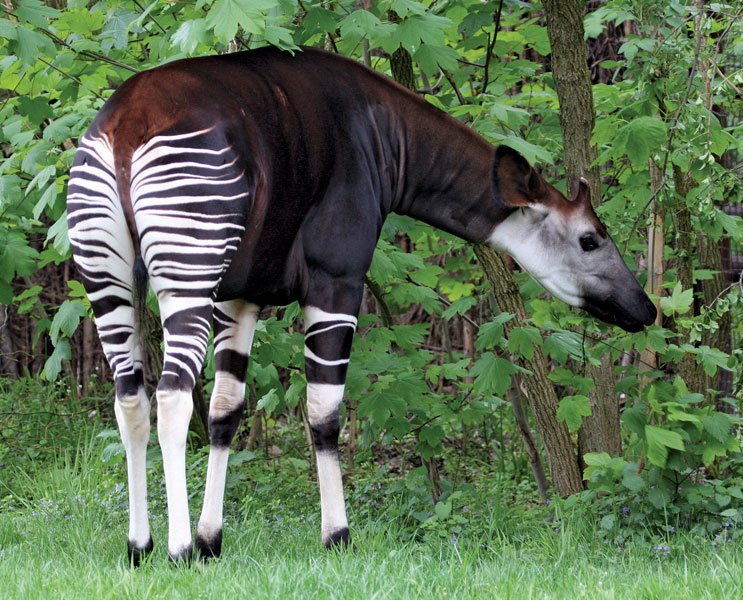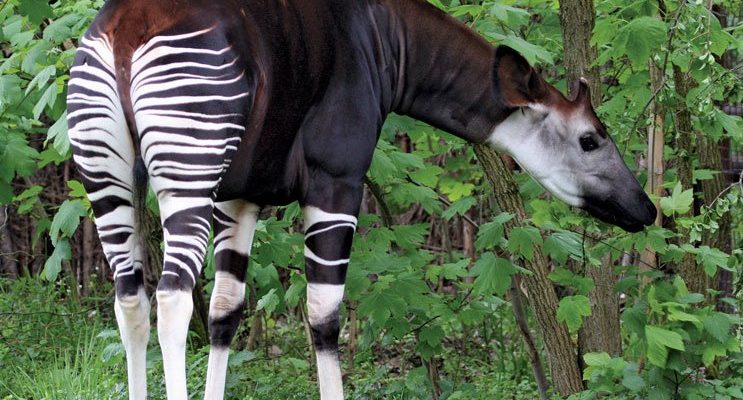
Despite its interesting looks, there are plenty of myths swirling around about the okapi. Maybe you’ve heard that it’s just a mythical creature or that it’s easy to find in the wild. Here’s the thing: most of these ideas are far from the truth. In this article, we’re going to break down some of the most common misconceptions about the okapi. By the end, you’ll have a clearer picture of this incredible animal that roams the rainforests of Central Africa.
Myth
If you’ve ever stumbled upon an okapi photo for the first time, you might have thought it was a mythical beast right out of a fairy tale. With its striking appearance, it’s easy to understand why! Here’s the deal, though: the okapi is entirely real.
First discovered by the Western world in the early 20th century, the okapi was initially referred to as the “African unicorn” because of its elusive nature. For years, locals living in the dense rainforests of the Democratic Republic of Congo knew about this creature, but it took a while for scientists to catch up. Just picture explorers making their way through thick jungles, only to eventually lay eyes on this enchanting animal. It’s a real success story, proving that sometimes, reality can be stranger than fiction.
Myth
You might assume that an animal with such a unique appearance would be found roaming the open savanna like its zebra cousins. But let me explain—okapis prefer dense rainforests! They thrive in the lush, green, and humid environment of the Congo Basin, hiding amongst tall trees and thick foliage.
These animals are shy and solitary creatures. They need the cover of trees to protect themselves from predators and to stay cool in the hot climate. When you think of them, picture a shadowy figure darting between trees, not out in the open. Their habitat choice is an essential part of their survival, allowing them to blend in with their surroundings and avoid predators.
Myth
It’s a common assumption that all large animals in the wild are similar to cows, munching away on grass. But that’s not the case with okapis. Here’s the thing—okapis are selective browsers. They primarily eat leaves, fruits, and other vegetation found in their forest habitat.
Their unique diet reflects their specialized adaptation to living in a dense forest. Unlike cows that graze on open grasslands, okapis have long tongues to reach up to high branches where the tastiest leaves hide. Imagine them stretching and twisting their tongues like a long, flexible tool, snapping off leaves that are out of reach for many other animals.
Myth
When we think about many animals, we picture them living in packs or groups, enjoying each other’s company. Okapis, however, are more like introverts of the animal kingdom. They prefer solitude!
These animals are generally solitary and only come together for mating. A mother might care for her calf for about a year, but otherwise, they enjoy their alone time. This behavior is tied to their shy nature, as they have evolved to be cautious in their tropical forest habitat. Imagine having a cozy, quiet life, avoiding the limelight—pretty appealing, right?
Myth
You might have noticed that okapis have striking white stripes on their legs, resembling those of a zebra. It’s easy to assume that these markings are a clever disguise. But here’s the truth: their stripes serve a different purpose.
The white stripes help okapis communicate with each other, especially in the dense forests where visibility is limited. Think about it: if you and your friend were playing hide and seek in a thick forest, distinguishing each other would be tough without a little help. The stripes make it easier for okapis to spot one another among the trees, especially during the low-light hours of dawn and dusk. It’s a fascinating example of how animals adapt to their environments!
Myth
Some people might think that because okapis are so unique and fascinating, they could make great pets or animals for zoos. But let me explain: okapis are not easily domesticated.
Their wild nature means they require a specific environment to thrive. Unlike dogs or cats, which have adapted closely to human life, okapis need the dense forests of their natural habitat to feel secure. Attempting to domesticate an okapi would likely cause stress and harm to the animal. They’re not meant to be house pets but rather magnificent creatures that belong in their wild surroundings.
Myth
You might think that with their unique looks, okapis must be abundant in the wild, similar to other well-known species. Unfortunately, that’s not the case. In reality, okapis are classified as endangered.
The main threats they face come from habitat loss and poaching. Deforestation for agriculture and logging has reduced their natural habitat significantly. Picture vast forests turned into farmland, leaving these creatures with fewer places to hide and thrive. Conservation efforts are underway to protect them, but spreading awareness about their plight is crucial for their future.
The okapi is so much more than just an interesting animal with a quirky appearance. By understanding the common myths and misconceptions surrounding it, we can appreciate this magnificent creature even more. From its mysterious beginnings to its unique lifestyle, the okapi offers us a window into the complexities of wildlife.
So, next time you hear about the okapi, remember: it’s not a mythical creature, nor is it a social butterfly of the animal kingdom. It’s a shy, elusive mammal that plays a vital role in its rainforest ecosystem. Spread the word about these incredible creatures and help raise awareness for their conservation!

